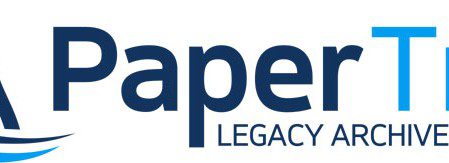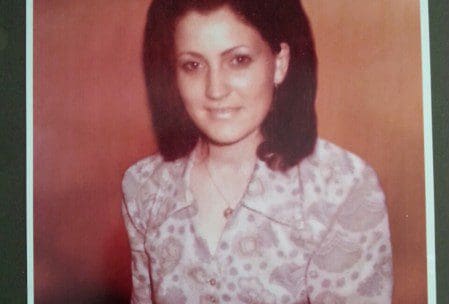For over 10 years, the families have asked police investigators where was the British Army’s death-squad, MRF, when McGurk’s Bar was bombed.
Every investigation by the police and Police Ombudsman’s Office in the 46 years since the atrocity, which claimed the lives of 15 civilians, have failed to even prove the existence of the Miltary Reaction Force (MRF) at the time never mind locate its active service units around Belfast on the night of the bombing.
Nevertheless, the archive discoveries below prove the covert unit’s existence at the time and even locate it operating in the areas surrounding McGurk’s Bar.
Paper Trail can now prove that the MRF operated with the resident 2nd Battalion Royal Regiment of Fusiliers (2RRF) which attended the scene of the massacre in its immediate aftermath. The archives evidence, in fact, that the MRF was active in the area the day and night before the attack but is absent from 39 Brigade Operations Logs on the day of the bombing.
Therefore, the families have been correct all along to query where was the MRF when their loved ones were killed as they have questioned whether its operatives were involved either directly or through agents it ran within the UVF paramilitary bomb team. Successive investigations by the British state up to the present day have either failed to locate the MRF in North Belfast at this time or have hidden the information from the families.
Instead, it has been left to a grandson of two of the victims to prove that the MRF operated with the British Army battalion resident in the area which re-emphasizes the importance of the families’ question: where was MRF when McGurk’s Bar was bombed?
“Legalised Death Squad”
The Military Reaction Force (MRF) was a clandestine British military unit deployed on the streets of Belfast when counter-insurgency expert General Sir Frank Kitson was the Brigadier in charge of 39 Airportable Brigade covering Belfast and Greater Belfast in 1971.
The MRF was formed around a nucleus of specialists garrisoned in Palace Barracks, Holywood, and was designed to be the cutting edge of Kitson’s low-intensity war against the Irish Republican Army (IRA). Kitson himself wrote of this battle on the very day of the McGurk’s Bar bombing on 4th December 1971 in Future Developments in Belfast (PDF):
“It is likely that having fined down the enemy organizations to the extent we have done, future successes will be increasingly hard to achieve from an operational point of view, unless we are able to make our own organization very much more efficient… As you know we are taking steps to do this in terms of building up and developing the MRF”
The MRF’s role in simple military terms was two-fold: (1) covert intelligence-gathering and agent handling (reconnaissance); (2) armed contact (reaction).
It left in its wake, though, a trail of dead civilians and agents. One alleged member told BBC Panorama in 2013 that:
“We were not there to act like an army unit, we were there to act like a terror group”
Another is quoted by the British state’s broadcaster that the MRF was quite simply “a legalised death squad” (BBC link).
Many of these deaths are now supposed to feature in an investigation into the MRF’s killings by the Police Service of Northern Ireland (PSNI) but many families are not hopeful that the police will do a proper investigation as PSNI lacks proper independence to investigate killings during the conflict, especially those perpetrated by the state.
British Military Presence Before the McGurk’s Bar Bombing
New Lodge witnesses record a heavy British military presence at vehicle checkpoints (VCP) throughout the morning and day of the McGurk’s Bar bombing due mainly to the embarrassing escape of 3 Republican prisoners from nearby Crumlin Road Jail on the 2nd December. Nevertheless, every police investigation up until the present day disputed the strength of these operations even though they were also reported in the media of the day.

Nevertheless, these documents record the heightened security operation from early in the morning and they were so tight that 2RRF reported congestion at 805am caused by the VCP on the Shore Road. Considering it was a Saturday morning and there were relatively fewer car owners in 1971, this tells us just how tight security from early morning on 4th December 1971.
Where was the MRF?
The logs prove that the MRF was actually attached and reported to the 2nd Battalion of the Royal Regiment of Fusiliers (2RRF) which was deployed from October 1971 to February 1972 in the New Lodge, Unity and City Centre areas of North Belfast.
The logs record that the MRF was operating covertly with 2RRF in the vicinity on the day and night before the McGurk’s Bar bombing but disappear from the logs on the day of the attack.
MRF was deployed to surveil the Mater hospital for Republicans who had escaped from Crumlin Road prison on 2nd December 1971. At 205pm it is recorded:
“3 men from CRUMLIN are in Mater and will be leaving at approx. 1600 (anon call) – men pos dressed as NUNS or NURSES… 2 RRF and MRF info to take action”

At 410pm 3rd December, MRF reports to 2RRF:
“Suspicious Car Triumph (white) [REDACTED] men outside Courthouse.”

Then at 10pm, less than 24 hours before the McGurk’s Bar bombing, the logs record:
“Surveillance tps [troops] of 2RRF and MRF have withdrawn from Mater Hospital”

Ciarán MacAirt said:
“Our families have questioned the deployment of British troops on the day of the McGurk’s Bar massacre, especially the presence of the British Army’s MRF death squad as we believed the state had a hidden hand in the atrocity.”
“Successive police and Police Ombudsman investigations have either failed to discover that the MRF was operating in the vicinity of McGurk’s Bar in December 1971 or they deliberately chose to omit this crucial evidence from their botched reports. The covert MRF operation in the log was less than ½ mile from McGurk’s Bar on the day before the attack. We now know from these archives that the heightened security alert for the prison escapees was maintained throughout the day of the bombing and the MRF was active in the subsequent security operations so our question remains the same: where was the MRF on the day and night of the McGurk’s Bar massacre? ”
Niall Ó Murchú of Kinnear and Co. Solicitors is legal representative for a number of the McGurk’s Bar families. He said:
“Yet again the families have been proved correct in querying the heightened security in the area and the presence of the notorious death squad, the Military Reaction Force. This new evidence not only raises serious questions about the role that the British Army played in facilitating the passage of the McGurk’s Bar killers; it also raises serious questions about the professionalism of investigations by the police and Office of the Police Ombudsman as they either failed to find this information or they failed to tell the families that it existed. Neither reflects kindly on them. It is disgraceful that a family member has to find this evidence.”
“It is time that the British state faced up to its legal obligations and stopped protecting mass-murderers. It can begin with the release of the evidence being withheld in this file and others requested by Ciarán MacAirt.”
Just after the McGurk’s Bar bombing, a special British Army mobile units with signal codes 04 was deployed to the area, along with a detachment from 1st Battalion of Parachute Regiment (1 PARA) which housed the MRF at Palace Barracks.
At 1050pm 2RRF reports that “04 is on Antrim Road between Carlisle Circus and Duncairn Gdns”. Then, at 1055pm 2RRF reports “04 arriving in 5 mins”. Then, at 1105pm 1 PARA reports “B1 on its way to Unity now. ACTION Told to come onto 2RRF net”.

It is unclear from the files whether 04 was specifically MRF or a rapid reaction mobile unit from another regiment. The redacted information in the files may give the families that evidence which is why the families have raised a complaint with the British Ministry of Defence to access the remainder.
References
(1) Ciarán MacAirt, Project Manager of Paper Trail, is a grandson of John and Kathleen Irvine. Kathleen was killed in the McGurk’s Bar attack and John was badly injured. Ciarán targeted the file in the National Archives, London. Part of the file was released to him after a year-long battle under Freedom of Information, although potentially significant evidence was withheld following a British Ministry of Defence Public Interest Test. He immediately lodged a complaint with the National Archives and British Ministry of Defence for access to the remaining information relating to the murder of his grandmother and the 14 other civilians.




